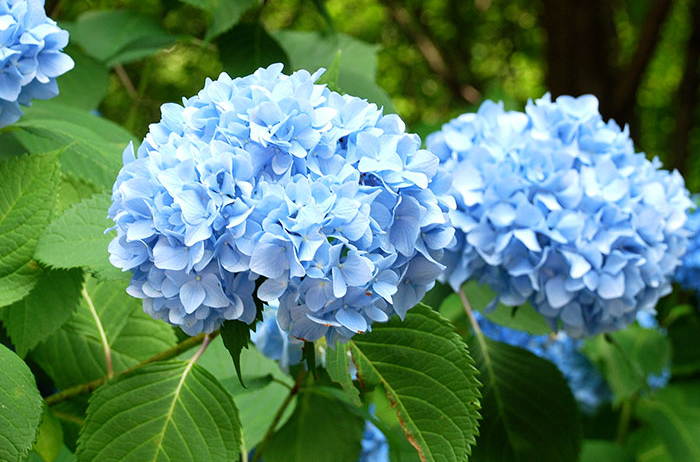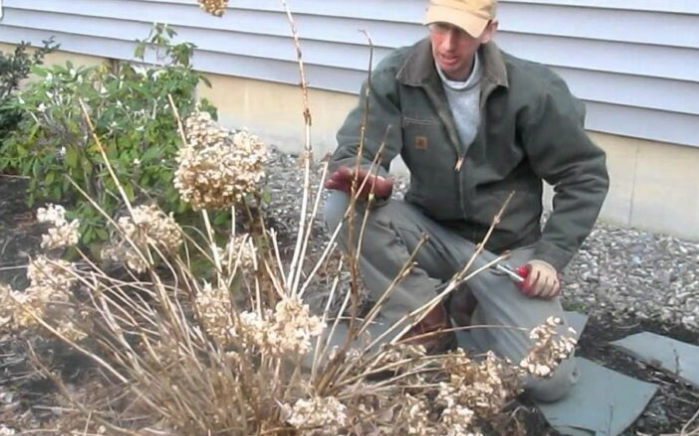Hydrangeas are beloved flowering shrubs that adorn gardens and landscapes with their stunning blooms and lush foliage. With their captivating beauty and versatility, hydrangeas have become a favorite among gardeners worldwide. In this comprehensive guide, we'll delve into the world of hydrangeas, exploring their various types, care requirements, pruning techniques, and creative uses in your garden.
The Many Faces of Hydrangeas
Hydrangeas come in a wide array of species and cultivars, each with its unique characteristics. Understanding the different types of hydrangeas is essential for selecting the right ones for your garden. Here are some popular varieties:
1. Bigleaf Hydrangeas (Hydrangea macrophylla)
Known for their large, showy blooms, bigleaf hydrangeas are often categorized into two groups: mophead and lacecap. Their flowers can change color based on soil pH, offering shades of blue, pink, or purple.
2. Panicle Hydrangeas (Hydrangea paniculata)
Panicle hydrangeas are renowned for their cone-shaped flower clusters that start white or green and gradually transform into shades of pink or red as they age. They are prized for their ability to thrive in full sun.
3. Oakleaf Hydrangeas (Hydrangea quercifolia)
Named for their oak-like foliage, these hydrangeas feature elongated clusters of white flowers and vibrant autumn foliage. They are excellent choices for adding texture to your garden.
4. Smooth Hydrangeas (Hydrangea arborescens)
Smooth hydrangeas are cherished for their large, rounded flower heads, typically white or green, which create a stunning display. They are hardy and adaptable, making them suitable for various climates.
5. Climbing Hydrangeas (Hydrangea anomala subsp. petiolaris)
Climbing hydrangeas are unique in that they can be trained to grow vertically. Their lacecap-style blooms and robust vines make them a charming addition to walls, trellises, or fences.
Planting and Care Tips
Proper care is crucial for the health and vitality of your hydrangeas. Follow these guidelines to ensure your hydrangeas flourish:
1. Location
- Hydrangeas thrive in well-drained soil with good organic content.
- Consider the specific needs of the hydrangea variety you choose, as some prefer shade while others thrive in full sun.
- Adequate spacing is essential to prevent overcrowding as mature hydrangeas can spread.
2. Watering
- Hydrangeas require consistent moisture, especially during hot, dry spells.
- Water deeply and avoid shallow, frequent watering to encourage deep root growth.
- Apply a layer of mulch to retain soil moisture and regulate temperature.
3. Fertilizing
- Use a balanced, slow-release fertilizer in the spring to promote healthy growth and abundant blooms.
- Avoid excessive fertilization, as it can lead to lush foliage at the expense of flowers.
4. Pruning
- Prune hydrangeas according to their specific type, as different varieties require different approaches.
- Remove dead or weak wood and spent blooms to encourage new growth.
- Timing is crucial; some hydrangeas bloom on old wood, while others bloom on new growth.
Pruning Techniques Demystified
Pruning hydrangeas can be intimidating, but it doesn't have to be. Here's a breakdown of the pruning techniques for common hydrangea varieties:
1. Bigleaf Hydrangeas (Hydrangea macrophylla)
- Prune immediately after flowering to remove dead or weak stems.
- Avoid heavy pruning, as these hydrangeas bloom on old wood.
2. Panicle Hydrangeas (Hydrangea paniculata)
- Prune in late winter or early spring before new growth begins.
- You can cut them back quite hard if needed since they bloom on new wood.
3. Oakleaf Hydrangeas (Hydrangea quercifolia)
- Minimal pruning is required; remove dead or damaged branches as needed.
- Prune right after flowering if necessary.
4. Smooth Hydrangeas (Hydrangea arborescens)
- Prune in late winter or early spring, cutting back to a few inches from the ground.
- They bloom on new growth, so don't be afraid to trim them vigorously.
Creative Uses for Hydrangeas
Beyond their traditional role as garden shrubs, hydrangeas offer various creative possibilities:
1. Cut Flowers
- Harvest hydrangea blooms to create stunning floral arrangements.
- Drying hydrangea blossoms preserves their beauty for year-round decoration.
2. Hedge or Border
- Use hydrangeas to create colorful hedges or borders in your garden.
- Their dense foliage and vibrant blooms make them excellent choices for this purpose.
3. Container Gardening
- Grow hydrangeas in containers on patios or balconies for a burst of color and elegance.
- Choose dwarf varieties for smaller pots.
Conclusion
Hydrangeas are versatile, captivating plants that can transform your garden into a haven of beauty and tranquility. By understanding their diverse types, following proper care guidelines, mastering pruning techniques, and exploring creative uses, you can unlock the full potential of these enchanting shrubs.




